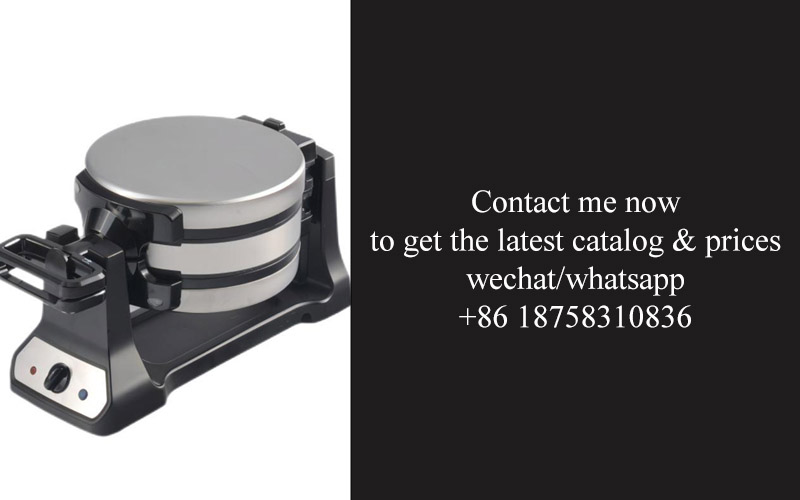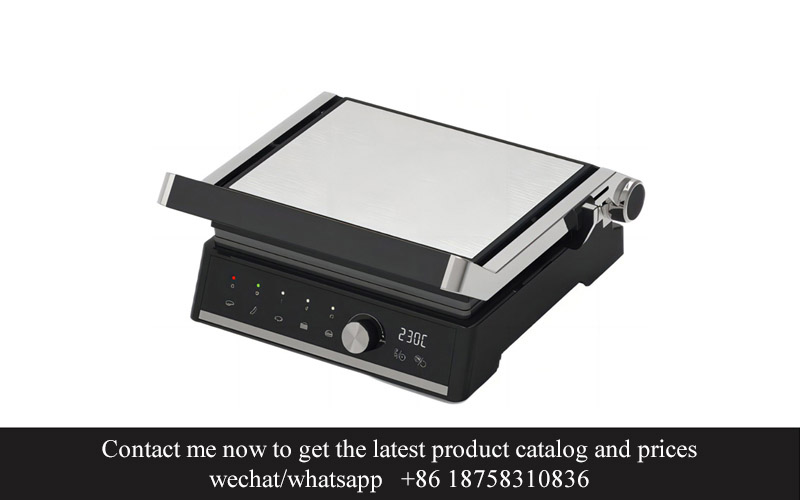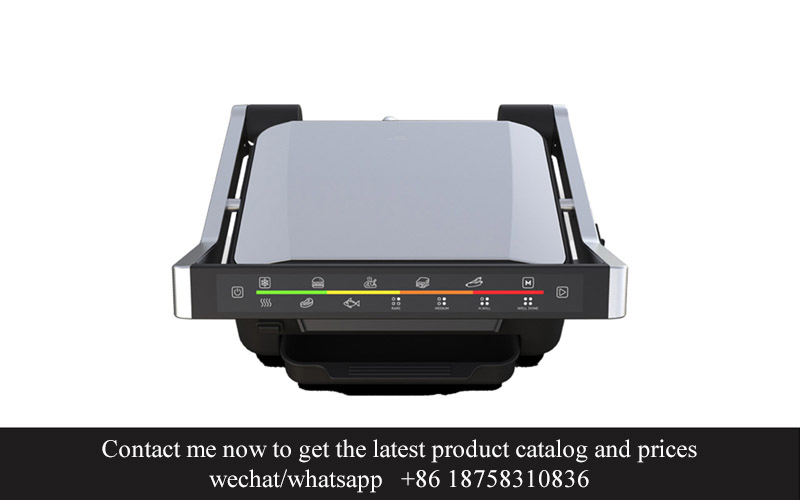Address
304 North Cardinal
St. Dorchester Center, MA 02124
Work Hours
Monday to Friday: 7AM - 7PM
Weekend: 10AM - 5PM
Address
304 North Cardinal
St. Dorchester Center, MA 02124
Work Hours
Monday to Friday: 7AM - 7PM
Weekend: 10AM - 5PM

In a world where convenience meets innovation, the kitchen has become a canvas for groundbreaking advancements. Among these transformations, ceramic coated non-stick plates stand out as a game-changer, reshaping the way we cook and clean. This shift isn’t just a passing trend; it’s a testament to the evolving demands of consumers and the relentless pursuit of culinary excellence. Let’s delve into the reasons behind this surge in popularity and what it means for the future of cookware technology.
The culinary landscape is undergoing a fascinating transformation, with ceramic coated non-stick plates leading the charge. These innovative cookware pieces are not just redefining the way we cook, but also reshaping the entire industry. From the sleek design to the health benefits, the rise of ceramic coated non-stick plates is a story of innovation and consumer demand.
Once reserved for the gourmet kitchen, non-stick cookware has now become a staple in homes across the globe. However, traditional non-stick coatings have come under scrutiny due to health concerns, particularly when exposed to high temperatures. Enter ceramic coated non-stick plates, which promise to deliver the convenience of non-stick without the health risks.
The magic behind ceramic coated non-stick plates lies in their non-porous, scratch-resistant, and durable surface. Made from a blend of ceramic particles and other natural minerals, these coatings are designed to withstand high temperatures without releasing harmful chemicals into the food. This means that you can cook your favorite meals with peace of mind, knowing that your cookware is safe and sustainable.
One of the standout features of ceramic coated non-stick plates is their exceptional non-stick properties. Unlike their conventional counterparts, these plates require minimal oil or butter, which not only makes cooking healthier but also reduces the cleanup time after cooking. Whether you’re flipping eggs, searing steaks, or sautéing vegetables, ceramic coated non-stick plates offer a seamless cooking experience that’s both enjoyable and efficient.
The European and American kitchen appliance markets have been quick to embrace this technological advancement. Consumers in these regions are known for their preference for high-quality, durable, and eco-friendly products, and ceramic coated non-stick plates fit the bill perfectly. The market for these cookware items has been experiencing steady growth, driven by the increasing awareness of health and wellness.
Innovation in the kitchen appliance sector is not just about creating new products; it’s also about understanding consumer needs and preferences. Ceramic coated non-stick plates address a common concern among cooks—finding cookware that is both non-stick and safe to use. This has been a game-changer for many, especially those who have had to deal with the challenges of cooking with traditional non-stick pans.
The manufacturing process of ceramic coated non-stick plates is a testament to the dedication to quality and innovation. The factory that produces these plates combines state-of-the-art technology with traditional craftsmanship. Each plate starts with a high-quality aluminum base, which is then coated with a layer of ceramic particles. This process ensures that the cookware is not only non-stick but also heat-resistant, making it suitable for all types of cooktops, including induction.
Quality control is paramount in the production of ceramic coated non-stick plates. The factory adheres to strict standards to ensure that each plate meets the highest quality criteria. This includes rigorous testing for non-stick performance, durability, and safety. The result is a cookware item that stands the test of time and use.
From a consumer perspective, the benefits of ceramic coated non-stick plates are undeniable. They are easy to clean, require less fat for cooking, and are safe for use with metal utensils. This versatility makes them a favorite among busy home cooks, professional chefs, and anyone looking to improve their cooking experience.
Looking ahead, the future of ceramic coated non-stick plates is bright. As the health and environmental concerns continue to grow, consumers are seeking out cookware that aligns with their values. The industry is already seeing advancements in the development of new ceramic coatings that are even more durable and sustainable. This means that ceramic coated non-stick plates are not just a trend but a sustainable solution for the future of cooking.

The European and American kitchen appliance industries have seen a surge in innovation, with a particular focus on ceramic coated non-stick plates. These markets are not just vast but also highly competitive, with consumer preferences constantly evolving. Understanding the market dynamics in these regions is crucial for any manufacturer looking to thrive in this space.
In Europe, the kitchen appliance market is characterized by a strong emphasis on quality and sustainability. Consumers are increasingly looking for eco-friendly products that are not only functional but also safe for the environment. This preference is reflected in the popularity of ceramic coated non-stick plates, which are seen as a healthier alternative to traditional non-stick coatings that can release harmful chemicals at high temperatures.
The American market, on the other hand, is known for its diverse consumer base and rapid adoption of new technologies. American consumers are typically more open to experimenting with different types of cookware, and the trend towards healthier eating habits has driven the demand for non-stick cookware that is free from PFOA and PTFE, the chemicals found in older non-stick coatings.
In Europe, the market for ceramic coated non-stick plates is segmented by demographics, with a significant portion of the market being held by younger consumers who are more health-conscious and environmentally aware. These consumers are also more likely to purchase online, where they can access a wider range of products and read reviews from other users.
In the United States, the market is segmented by lifestyle, with busy professionals and families seeking cookware that simplifies meal preparation. The convenience of ceramic coated non-stick plates, which reduce the need for excessive oil or butter, aligns well with these consumer needs. Additionally, the premium segment of the market is growing, as consumers are willing to pay more for high-quality, durable cookware that stands the test of time.
Distribution channels in both regions play a pivotal role in the success of ceramic coated non-stick plates. In Europe, brick-and-mortar stores remain a dominant force, with major retailers and department stores offering a wide variety of cookware options. Online sales are also on the rise, with more and more consumers turning to e-commerce platforms for convenience and variety.
In the U.S., the retail landscape is equally diverse, with a mix of large national chains and independent specialty stores. Online sales have seen exponential growth, driven by the convenience and competitive pricing offered by online marketplaces. Social media and influencer marketing have become significant drivers of consumer behavior, with many consumers relying on recommendations from trusted sources before making a purchase.
Pricing strategies in both Europe and the U.S. are influenced by factors such as brand reputation, product quality, and perceived value. Premium brands are often priced higher but can justify the cost through superior performance and durability. Meanwhile, mid-range and budget options cater to a broader market, offering a balance between cost and quality.
Innovation is a constant in both the European and American kitchen appliance industries. New materials, designs, and functionalities are continuously introduced to meet consumer demands. For ceramic coated non-stick plates, this means ongoing research into improving the coating’s non-stick properties, heat resistance, and longevity.
Regulatory compliance is another critical aspect of the market dynamics. Both regions have stringent safety and environmental regulations that manufacturers must adhere to. This includes the use of materials that are safe for human health and the environment, as well as ensuring that products meet specific safety standards.
Finally, the market dynamics in both Europe and the U.S. are shaped by the global supply chain. Manufacturers must navigate the complexities of sourcing raw materials, managing production, and ensuring timely delivery to retailers and customers. This requires a high level of coordination and efficiency to maintain competitive pricing and product availability.
Understanding these market dynamics is essential for any ceramic coated non-stick plates factory looking to establish a strong presence in the European and American markets. By staying attuned to consumer trends, distribution channels, pricing strategies, and regulatory requirements, manufacturers can position their products for success and adapt to the ever-changing landscape of the kitchen appliance industry.

Ceramic coated non-stick plates have revolutionized the kitchen appliance industry, and there’s a wealth of innovative ideas that are shaping the future of this category. Here’s a look at some of the creative concepts that are set to make a splash:
Integrating Smart Technology: Imagine a ceramic coated non-stick plate that not only cooks your food to perfection but also provides you with nutritional information and cooking tips. Smart sensors could monitor temperature and cooking times, ensuring that every dish is prepared with precision.
Eco-Friendly Materials: Sustainability is a growing concern, and manufacturers are exploring eco-friendly alternatives for the ceramic coating. This could involve using plant-based resins or recycled materials, making the plates more environmentally conscious without compromising on performance.
Interactive Surface Designs: Who says a cookware surface can’t be interactive? Innovative designs could include LED lighting that changes color based on the type of food being cooked, or even a built-in digital display that shows recipes or cooking times.
Multi-Functional Plates: Why limit yourself to a single use? Multi-functional ceramic coated non-stick plates could be designed with removable inserts for steaming, sautéing, or baking, offering a versatile cooking experience in one dish.
Customizable Coatings: Not everyone has the same taste in cookware. With customizable coatings, consumers could choose from a variety of colors and finishes to match their kitchen decor. This could also include special coatings that enhance flavor or prevent sticking even more effectively.
Anti-Bacterial Coatings: Hygiene is crucial in the kitchen, and new ceramic coatings could be developed with anti-bacterial properties. These plates would be less prone to food-borne illnesses and would require less frequent cleaning.
Energy-Efficient Coatings: Cooking can be an energy-intensive activity, but innovative ceramic coatings could be designed to retain heat more effectively, reducing the need for additional cooking time and energy.
Sound Emitting Coatings: A novel idea could involve incorporating sound-emitting technology into the ceramic coating. This could alert users when the food is done or when the surface is too hot to touch, adding an extra layer of safety.
Interactive Recipe Guides: Imagine a ceramic coated non-stick plate that doubles as a recipe guide. A simple tap or scan could bring up cooking instructions, nutritional facts, and even video tutorials right on the plate’s surface.
Self-Cleaning Features: While non-stick coatings are great for easy cleanup, some manufacturers are exploring self-cleaning features. These plates could have a special coating that breaks down food particles upon contact with heat, making cleanup almost unnecessary.
Durable and Scratch-Resistant: Ceramic coatings are known for their durability, but there’s always room for improvement. New formulations could make the plates even more resistant to scratches and wear, extending the lifespan of the cookware.
Adaptive Cooking Surfaces: One of the most futuristic ideas involves plates that can change their surface properties based on the type of food. For example, a smooth surface for delicate sauces and a textured surface for searing meats.
These innovative ideas for ceramic coated non-stick plates reflect the ever-evolving landscape of kitchen appliances. As technology continues to advance, the possibilities for these cookware items seem almost limitless, promising a more efficient, convenient, and enjoyable cooking experience for all.

Ceramic coatings have emerged as a game-changer in the world of cookware, offering a blend of non-stick properties and durability that has redefined modern kitchen appliances. Here’s how ceramic coating enhances the role of cookware in our daily lives:
The smooth, glass-like surface of ceramic coatings reduces friction between the pan and food, making it easier to cook with less oil. This innovation is particularly appealing to health-conscious consumers who want to minimize their fat intake without compromising on flavor.
Ceramic coatings are known for their exceptional non-stick capabilities, far superior to traditional Teflon coatings. This means that even delicate foods like eggs and pancakes can be cooked without sticking, making cleaning a breeze and extending the life of the cookware.
One of the standout features of ceramic coatings is their resistance to high temperatures. Unlike some other non-stick coatings, ceramic can withstand up to 850°F (454°C), allowing for a wider range of cooking methods including stir-frying, searing, and sautéing.
The eco-friendly aspect of ceramic coatings is a significant draw for environmentally conscious consumers. These coatings are free from PFOA, PTFE, and other harmful chemicals often found in traditional non-stick coatings. This makes ceramic-coated cookware a safer choice for both the user and the planet.
The durability of ceramic coatings is another key advantage. They are more resistant to scratches and wear compared to traditional non-stick coatings, which can degrade over time and release harmful particles into food. This longevity means that ceramic-coated cookware can maintain its performance for years, reducing the need for frequent replacements.
The aesthetic appeal of ceramic coatings is undeniable. They come in a variety of colors and finishes, from sleek black to vibrant red, which can add a touch of style to any kitchen. This design element is especially appreciated by those who are passionate about the aesthetics of their kitchenware.
Ceramic coatings also offer excellent heat distribution. The uniform heat across the surface ensures that food cooks evenly, preventing hot spots that can burn or overcook certain parts of the dish. This feature is crucial for achieving professional-quality results at home.
The non-reactive nature of ceramic coatings means that they won’t impart any flavors or odors to the food, preserving the natural taste and aroma of ingredients. This is particularly important for those who enjoy cooking with delicate spices or flavors.
The versatility of ceramic-coated cookware is hard to beat. It can be used on a variety of cooking surfaces, including induction, gas, electric, and ceramic cooktops. This universality makes it a convenient choice for those who may not have a single stove at home or who travel frequently.
Maintenance of ceramic-coated cookware is straightforward. While it’s more resistant to scratches and stains than other coatings, it’s still recommended to avoid abrasive cleaners and harsh chemicals. A gentle sponge and mild detergent are usually sufficient to keep the cookware looking and performing like new.
Finally, the growing popularity of ceramic-coated cookware is a testament to its effectiveness. As more consumers become aware of the benefits, the demand for these products continues to rise. Manufacturers are responding by expanding their lines and offering more innovative designs, further solidifying ceramic coatings’ role in modern cookware.

In the ever-evolving landscape of the kitchen appliance industry, staying ahead of trends is crucial. Here’s a glimpse into the current trends and the data that backs them up:
Cooking Styles Are ShiftingGone are the days when the only cooking method was boiling or frying. Consumers are now embracing a variety of cooking techniques, from sous-vide to air frying. This shift is reflected in the demand for cookware that can handle these diverse methods. Data from market research firms shows a growing interest in multi-functional cookware that can cater to these new cooking trends.
Health and Wellness Are at the ForefrontThe health-conscious consumer is driving the market. There’s a noticeable trend towards cookware that is free from harmful chemicals, such as PFOA and PTFE. Ceramic coated non-stick pans, which are free from these substances, are becoming increasingly popular. Studies indicate that the demand for eco-friendly and non-toxic cookware is on the rise, with a significant portion of consumers willing to pay a premium for it.
Smart Kitchen Technology IntegrationThe integration of smart technology into kitchen appliances is not new, but it’s expanding rapidly. Smart cookware that can connect to smartphones and provide real-time cooking data is gaining traction. Data from industry reports reveals a surge in the sales of smart cookware, with many consumers seeing the value in convenience and precision.
Sustainability and Environmental ConcernsSustainability is no longer just a buzzword; it’s a critical factor in consumer purchasing decisions. Cookware made from recycled materials or those that are designed for longevity are catching on. Companies that prioritize sustainability in their manufacturing processes are seeing positive responses from consumers who are more environmentally conscious. The data reflects a significant increase in eco-friendly cookware sales.
Customization and PersonalizationConsumers are looking for cookware that not only performs well but also reflects their personal style. Customizable cookware with unique designs and finishes is becoming a sought-after product. The market research indicates a growing segment of consumers who are willing to invest in cookware that is as individual as they are.
E-commerce and Direct-to-Consumer SalesThe rise of e-commerce has transformed the way consumers purchase kitchen appliances. Data shows a significant shift towards online sales, with direct-to-consumer brands gaining market share. This trend is attributed to the convenience of shopping online and the competitive pricing that e-commerce platforms often offer.
Globalization and Cultural FusionAs the world becomes more interconnected, so does the kitchen. Consumers are increasingly interested in cookware that reflects a blend of cultural influences. Data from the kitchen appliance industry points to a surge in products that are inspired by international cuisines, offering a variety of cooking options that cater to diverse tastes.
Urbanization and Compact LivingThe trend towards urban living is changing the way people cook. Smaller living spaces and busy lifestyles are leading to a demand for compact and space-saving cookware. Data from market research firms highlights a trend towards cookware that is designed for efficiency and ease of storage.
Eco-friendly PackagingThe environmental impact of packaging is also a consideration for consumers. Brands that use sustainable and recyclable packaging are gaining favor. The data indicates that consumers are more likely to purchase products from companies that demonstrate a commitment to reducing their ecological footprint.
In conclusion, the kitchen appliance industry is influenced by a complex interplay of factors, including consumer preferences, technological advancements, and environmental concerns. Staying informed about these trends and the data behind them is essential for any company looking to succeed in this dynamic market.

Ceramic coated non-stick plates have emerged as a true game-changer in the kitchen appliance industry, reshaping how we perceive and use cookware. Here’s why they’ve become a revolutionary force:
The Non-Stick RevolutionThese plates offer a seamless, non-stick surface that reduces the need for excessive oil or butter, making cooking healthier and more efficient. Unlike traditional non-stick coatings, which can wear off or degrade over time, ceramic coatings are durable and maintain their non-stick properties for years.
Health BenefitsThe use of ceramic coatings eliminates the risk of PFOA and PTFE, which are harmful chemicals found in older non-stick coatings. This shift towards a safer alternative is not just a trend but a necessity for health-conscious consumers who want to minimize exposure to potentially harmful substances.
Environmentally FriendlyCeramic coatings are more eco-friendly due to their longevity and the reduced need for harsh cleaning agents. They are also recyclable, further contributing to a more sustainable approach to kitchenware. This environmental consciousness is a significant factor driving the popularity of ceramic coated non-stick plates.
Versatility in CookingThese plates are not just for eggs and pancakes; they can handle a wide range of cooking methods, including searing, baking, and sautéing. The even heat distribution of ceramic coatings ensures that food cooks uniformly, eliminating hotspots and burning.
Durability and Easy CleaningCeramic coatings are incredibly durable and can withstand metal utensils without scratching or damaging the surface. This durability means that the plates can last for years, reducing the need for frequent replacements. Cleaning is also a breeze, as food releases easily from the surface, and the plates are resistant to stains and odors.
Design and StyleCeramic coated non-stick plates come in a variety of colors and designs, offering a stylish addition to any kitchen. This aesthetic appeal is a significant factor in their appeal, as consumers look for cookware that not only performs well but also complements their kitchen decor.
Cost-EffectiveDespite their premium features, ceramic coated non-stick plates are often priced competitively compared to other high-quality cookware options. This affordability makes them accessible to a broader market, further solidifying their position as a game-changer in the industry.
Global Market AdoptionThe popularity of ceramic coated non-stick plates is not confined to any single region. They have gained traction worldwide, with Europe and the United States leading the way. This global adoption is a testament to the product’s universal appeal and the industry’s ability to adapt to consumer demands.
Innovation in Material ScienceThe development of ceramic coatings is a result of significant advancements in material science. These coatings are engineered to be non-reactive, meaning they don’t interact with food or cooking ingredients, maintaining their integrity and performance over time.
Consumer Trust and SatisfactionThe switch to ceramic coated non-stick plates has been met with widespread consumer trust and satisfaction. Users appreciate the ease of cooking, the health benefits, and the long-lasting nature of these products. This positive feedback has fueled the continued growth of the ceramic coated non-stick plate market.
The Future of CookwareAs the demand for healthier, sustainable, and durable cookware increases, ceramic coated non-stick plates are poised to remain a key player in the industry. Innovations in ceramic technology, such as enhanced durability and heat resistance, are likely to further solidify their position as a game-changer, shaping the future of kitchen appliances.

In the heart of the cookware industry, there’s a meticulous process that transforms raw materials into ceramic coated non-stick plates. This journey is a blend of cutting-edge technology and traditional craftsmanship, ensuring that each plate meets the highest standards of quality and performance.
The process begins with the selection of high-quality materials. The base of the plate is typically made from durable metals like aluminum or stainless steel, chosen for their heat conductivity and strength. These metals are then carefully rolled and formed into the desired shape, ensuring a smooth and even surface that will serve as the foundation for the ceramic coating.
Once the metal is shaped, it moves through a series of preparation stages. The surface is meticulously cleaned to remove any impurities or oils that could interfere with the adhesion of the ceramic coating. This step is crucial, as a clean surface is essential for the longevity and effectiveness of the non-stick properties.
The next phase involves the application of the ceramic coating. This is where the magic happens. The coating is a proprietary blend of ceramic particles and specialized resins, which are mixed to create a liquid that will bond to the metal surface. The liquid is applied using a high-tech spraying system that ensures even coverage, with no visible brush strokes or streaks.
After the ceramic coating is applied, the plates enter a curing process. This is a critical step where the resins harden and the ceramic particles bond to the metal. The plates are subjected to controlled temperatures and humidity levels to facilitate the curing process. This stage is carefully monitored to ensure that the coating reaches the optimal hardness and durability.
Once cured, the plates are inspected for any defects. This inspection is thorough, involving visual checks and, in some cases, advanced testing equipment to measure the non-stick properties and the overall quality of the coating. Any plates that do not meet the stringent standards are set aside for rework or discarded.
The next step is the addition of any decorative elements, such as patterns or colors. This can be done through various methods, including silk-screen printing, pad printing, or even laser engraving. Each method has its advantages and is chosen based on the desired look and feel of the final product.
After decoration, the plates are polished to a high shine. This not only enhances their aesthetic appeal but also helps to maintain the non-stick properties by ensuring a smooth surface. The polishing process is delicate, as it must not damage the ceramic coating.
Finally, the plates are packaged. This involves selecting the appropriate containers that protect the product during shipping and storage. The packaging design is often tailored to the brand and market, with considerations for ease of use, display, and environmental impact.
Throughout the entire manufacturing process, there’s a strong emphasis on sustainability. The factory uses energy-efficient equipment and processes, and recycling programs are in place to manage waste materials. The goal is to produce high-quality ceramic coated non-stick plates while minimizing the environmental footprint.
The end result is a product that not only looks beautiful but also performs exceptionally well in the kitchen. The manufacturing process at the ceramic coated non-stick plates factory is a testament to the dedication and expertise that goes into creating a game-changing cookware item.

In the ever-evolving landscape of kitchenware manufacturing, the emphasis on quality control and sustainability has become paramount. This dual focus is not just a trend but a necessity, ensuring that products not only meet high standards of performance but also align with environmental and social responsibilities. Let’s delve into how these aspects are addressed in the production of ceramic coated non-stick plates.
The meticulous process begins with the selection of raw materials. High-quality ceramic coatings are chosen for their durability and non-reactive properties, which are crucial for the longevity and safety of the product. These coatings are free from harmful chemicals like PFOA and PTFE, which are commonly found in traditional non-stick coatings.
During the manufacturing process, the adherence of the ceramic coating to the plate’s surface is a critical factor. Advanced techniques are employed to ensure a seamless bond that resists wear and tear, preventing peeling or flaking over time. This is achieved through a series of precision-engineered steps, including a thorough cleaning and preparation of the plate surface, followed by the application of the ceramic coating in a controlled environment.
Environmental considerations are at the forefront of the production process. Factories are equipped with state-of-the-art ventilation systems to minimize the release of any harmful particles into the atmosphere. The use of water-based paints and coatings reduces the VOC (volatile organic compounds) emissions, contributing to a cleaner and healthier workspace.
Energy efficiency is another key aspect of sustainable production. Modern factories leverage advanced energy-saving technologies, such as LED lighting and energy-recovery systems, to reduce their carbon footprint. These systems not only cut down on energy costs but also help in maintaining a stable and comfortable working environment for the employees.
In terms of waste management, a zero-waste policy is often implemented. Any leftover materials, such as unused ceramic powder or metal shavings, are recycled or repurposed within the factory. This approach not only reduces the environmental impact but also helps in cost savings by minimizing the need for new materials.
Employee welfare is a cornerstone of sustainable production. Factories prioritize the health and safety of their workers through regular training sessions on safety protocols and the use of personal protective equipment. This commitment to employee well-being translates into a more productive and motivated workforce.
Quality control is not limited to the physical aspects of the product. It extends to the entire supply chain, ensuring that every component meets the stringent standards set by the factory. Regular audits and inspections are conducted to verify the quality of incoming materials and to monitor the production process.
Testing is another critical component of quality control. Each ceramic coated non-stick plate undergoes a battery of tests to ensure it meets the required specifications. These tests include checking for non-stick properties, heat resistance, durability, and ease of cleaning. Only plates that pass these tests are released for distribution.
Sustainability also involves the end-of-life stage of the product. The design of ceramic coated non-stick plates is such that they can be easily recycled or disposed of in an environmentally friendly manner. This encourages customers to make more sustainable choices in their kitchenware.
In conclusion, the manufacturing process of ceramic coated non-stick plates at a factory is a testament to the industry’s commitment to quality and sustainability. From the selection of raw materials to the end-of-life stage, every step is carefully planned and executed to produce a product that not only performs exceptionally well but also respects the environment and the people who use it.

Ceramic coated non-stick plates have become a staple in modern kitchens, offering numerous benefits that have redefined the cooking experience. Consumers are drawn to these plates for their ease of use, health advantages, and eco-friendly production. The market potential for these products is vast, as they cater to a diverse range of customers from health-conscious individuals to environmentally aware families.
One of the primary consumer benefits is the health aspect. Traditional non-stick coatings, often containing PFOA and PTFE, have raised concerns due to their potential health risks. Ceramic coatings, on the other hand, are free from these harmful chemicals, making them a safer option for cooking. Consumers who prioritize their health are more likely to choose ceramic coated non-stick plates over their conventional counterparts.
Ease of cooking is another significant draw. These plates require less oil, which not only makes the food healthier but also simplifies the cleaning process. The non-stick properties allow for even cooking, reducing the likelihood of food sticking to the surface. This is particularly appealing to busy professionals and parents who need to prepare meals quickly and efficiently.
Additionally, the durability of ceramic coated non-stick plates is a major selling point. Unlike traditional non-stick pans that can degrade over time, ceramic coatings are more resistant to scratches and wear. This longevity means that consumers can use the same plate for years without worrying about it losing its non-stick qualities.
The eco-friendly aspect of ceramic coated non-stick plates also plays a significant role in their market potential. As awareness of environmental issues grows, consumers are increasingly looking for sustainable alternatives. Ceramic coatings are made from natural minerals, which are renewable resources. The plates are also recyclable, contributing to a circular economy and reducing the environmental footprint.
Moreover, the versatility of ceramic coated non-stick plates is a major advantage. They can be used on various cooking surfaces, including induction cooktops, which was not always the case with traditional non-stick pans. This broadens the market appeal, as it caters to a wider range of consumers who have different kitchen setups.
The market potential is further enhanced by the growing trend of meal prepping and home cooking. As more people seek to control what they eat, ceramic coated non-stick plates become an essential tool for preparing a variety of dishes. The ability to cook a wide array of foods, from delicate omelets to hearty stir-fries, on the same plate makes these products highly attractive.
The market is also influenced by demographic shifts. For instance, the aging population may prefer ceramic coated non-stick plates due to their ease of use, which is particularly important as they age. Similarly, younger consumers, who are more environmentally conscious, are likely to be drawn to the sustainable aspects of these products.
Another factor contributing to the market potential is the growing demand for healthy eating. With the rise of wellness and clean eating trends, consumers are looking for cooking tools that align with their health goals. Ceramic coated non-stick plates fit this bill perfectly, offering a healthier alternative to traditional cooking methods.
In conclusion, the consumer benefits of ceramic coated non-stick plates, including health advantages, ease of use, durability, eco-friendliness, and versatility, coupled with the growing market for home cooking and meal prepping, create a strong market potential. As more consumers become aware of these benefits, the demand for ceramic coated non-stick plates is expected to rise, solidifying their position as a game-changer in the cookware industry.

Ceramic coated non-stick plates have been making waves in the kitchen appliance industry, offering a healthier, more durable, and eco-friendly alternative to traditional non-stick coatings. As we delve into the future, it’s fascinating to envision the potential developments that could further revolutionize this technology.
The demand for ceramic coatings has surged due to their non-toxic nature, which contrasts sharply with the PFOA and PTFE found in traditional non-stick coatings. This shift in consumer preference is driving innovation and pushing manufacturers to explore new ways to enhance the performance and longevity of ceramic coatings.
One potential development lies in the refinement of the ceramic coating itself. Researchers are continuously working on creating coatings that are even more durable and scratch-resistant. By improving the surface texture and bonding of the ceramic particles, these new coatings could withstand more rigorous use without losing their non-stick properties.
Another area of interest is the integration of additional functionalities within the ceramic coating. For instance, incorporating antibacterial agents could make the plates not only non-stick but also hygienic, reducing the risk of foodborne illnesses. Similarly, adding UV protection could safeguard the food from harmful rays during storage.
Smart technology is also on the horizon. Imagine ceramic coated non-stick plates that can monitor the cooking temperature and alert the user when it’s time to flip the food or turn off the stove. This kind of innovation would not only make cooking safer but also more convenient.
The manufacturing process is another area ripe for improvement. As the demand for ceramic coated plates grows, manufacturers are looking for more efficient and cost-effective ways to produce them. This could involve the development of new techniques for applying the ceramic coating, such as spray-on or roll-coating methods, which could reduce waste and improve the consistency of the coating.
In terms of sustainability, the future of ceramic coated non-stick plates could see a greater emphasis on the use of recycled materials. By sourcing raw materials from recycled products, manufacturers can significantly reduce their environmental footprint and appeal to eco-conscious consumers.
The packaging of these plates is also a point of interest. Biodegradable and compostable materials are becoming more popular, and the industry may soon see ceramic coated plates packaged in ways that minimize waste and pollution.
As we look ahead, the market potential for ceramic coated non-stick plates is immense. The global kitchen appliance market is expected to grow significantly over the next few years, driven by factors such as urbanization, changing consumer lifestyles, and an increasing awareness of health and wellness.
The health benefits of ceramic coated plates are undeniable. They eliminate the need for harmful chemicals, making them a safer choice for families and individuals looking to avoid PFOA and PTFE. Additionally, their durability means they can last longer than traditional non-stick pans, reducing the need for frequent replacements and thus, the waste generated.
In terms of market potential, the versatility of ceramic coated non-stick plates is a significant advantage. They can be used on various types of cooktops, including induction, and their non-stick properties make them ideal for delicate dishes and recipes that require less oil or butter.
The global market for ceramic coated non-stick plates is also being influenced by demographic shifts. As the population ages, there is an increasing demand for cookware that is easy to use and maintain, which ceramic coated plates are perfectly suited for.
In conclusion, the future of ceramic coated non-stick plate technology is bright. With ongoing research and development, we can expect to see improvements in durability, functionality, and sustainability. The market potential is vast, and as consumer preferences continue to shift towards healthier, eco-friendly products, ceramic coated non-stick plates are poised to become a staple in modern kitchens worldwide.